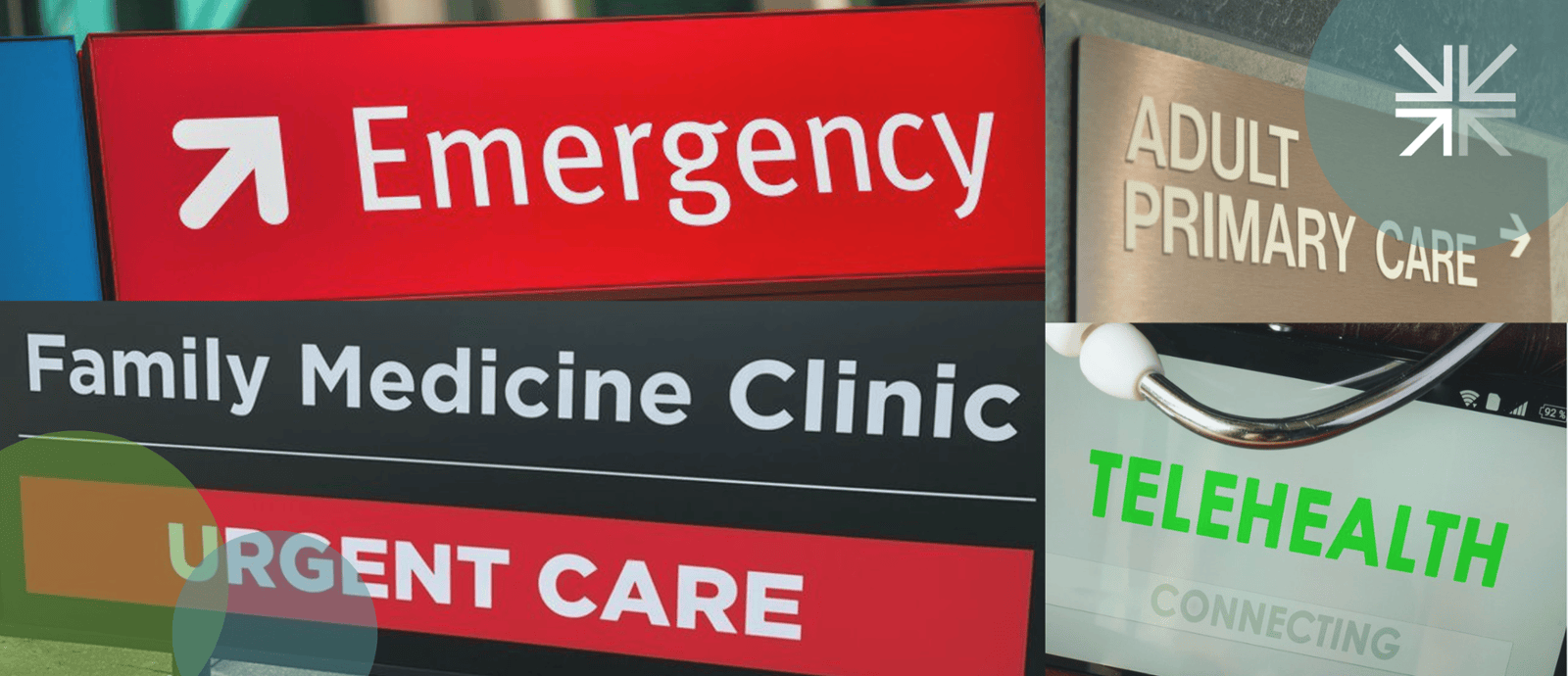
Knowing when to seek emergency care versus using other healthcare options is crucial for your health and financial well-being. Emergency rooms (ERs) are designed to handle serious and life-threatening conditions, while other care options like urgent care centers, primary care physicians, retail clinics, and telehealth services are more appropriate for less severe issues. Understanding the difference between these care options can help you receive timely and appropriate care while avoiding unnecessary costs.
When you or someone you know is experiencing a specific health concern it can sometimes be difficult to determine the best, most effective, care option for the circumstance. Especially in situations of quick onset. Proactively understanding the variety of care options available, along with which level of care is most appropriate based on medical symptoms, can ensure you are prepared to make the most effective care decision when needed.
When to go to the Emergency Room:
(A list of five medical situations that may require a trip to the emergency room vs. a different care option)
1) Serious Injuries: Go to the ER for injuries such as deep cuts, broken bones, head injuries, or severe burns
Example: If you fall and hit your head, experience loss of consciousness, or have a deep cut that won't stop bleeding, go to the Emergency Room.
2) Chest Pain or Difficulty Breathing: These symptoms could indicate a heart attack or other serious condition.
Example:If you experience sudden chest pain, shortness of breath, or dizziness, seek emergency care immediately.
3) Severe Abdominal Pain: This could be a sign of a serious condition like appendicitis or a ruptured organ.
Example:If you have sudden, severe abdominal pain that doesn't go away, go to the Emergency Room.
4) Symptoms of Stroke: Sudden numbness, weakness, or difficulty speaking could indicate a stroke.
Example: If you or someone you're with experiences these symptoms, call 911 immediately.
5) Severe Allergic Reactions: Symptoms like swelling, difficulty breathing, or severe itching could be signs of anaphylaxis.
Example: If you're stung by a bee and have trouble breathing or have swelling of the face or throat, seek emergency care.
When other care options are a better choice:
(A list of four medical needs to use an alternative care option)
1) Minor Injuries or Illnesses: For minor cuts, bruises, colds, or sore throats, consider visiting an urgent care center, retail clinic or your primary care physician.
Example: If you have a mild fever and sore throat, it's best to see your primary care physician.
2) Routine Care and Check-ups: For routine check-ups, vaccinations, or ongoing management of chronic conditions, see your primary care physician.
Example: If you need a flu shot or a routine check-up, schedule an appointment with your primary care physician.
3) Non-Emergency Mental Health Concerns: For non-urgent mental health issues, consider seeing a therapist, counselor, or psychiatrist. There are also many telehealth options for mental health services and these often come with a lesser cost than some other options.
Example: If you're feeling stressed or anxious, schedule an appointment with a mental health professional.
4) Non-Life-Threatening Conditions: For conditions like mild asthma attacks, minor allergic reactions, or urinary tract infections, urgent care, telehealth services or your primary care physician may be appropriate.
Example: If you have a mild allergic reaction to a bug bite, consider visiting an urgent care center.
Now that you are aware of appropriate levels of care based on specific health concerns or conditions, here's why it is important to utilize each based on need and circumstance.
1) Timely Care: Knowing when to seek emergency care versus using other options ensures that you receive the right level of care in a timely manner. This can prevent delays in treatment for nonemergency needs.
2) Cost-Effectiveness: Emergency room visits are typically more expensive than visits to urgent care centers, primary care physicians or telehealth. Understanding when to use each level of care can help you avoid unnecessary costs and reduce healthcare expenses.
3) Efficient use of Resources: Emergency rooms are designed to handle serious and life-threatening conditions. Using the ER for minor issues can strain resources and lead to longer wait times for those with true emergencies. By using the appropriate level of care, you help ensure that resources are available for those who need them most.
4) Continuity of Care: For ongoing or chronic conditions, receiving care from your primary care physician or a specialist can help ensure continuity of care. They can monitor your condition over time and make adjustments to your treatment plan as needed.
Understanding the different levels of care and when to use each can help you make informed decisions about your healthcare, leading to better outcomes, reduced costs and a more efficient use of resources.
